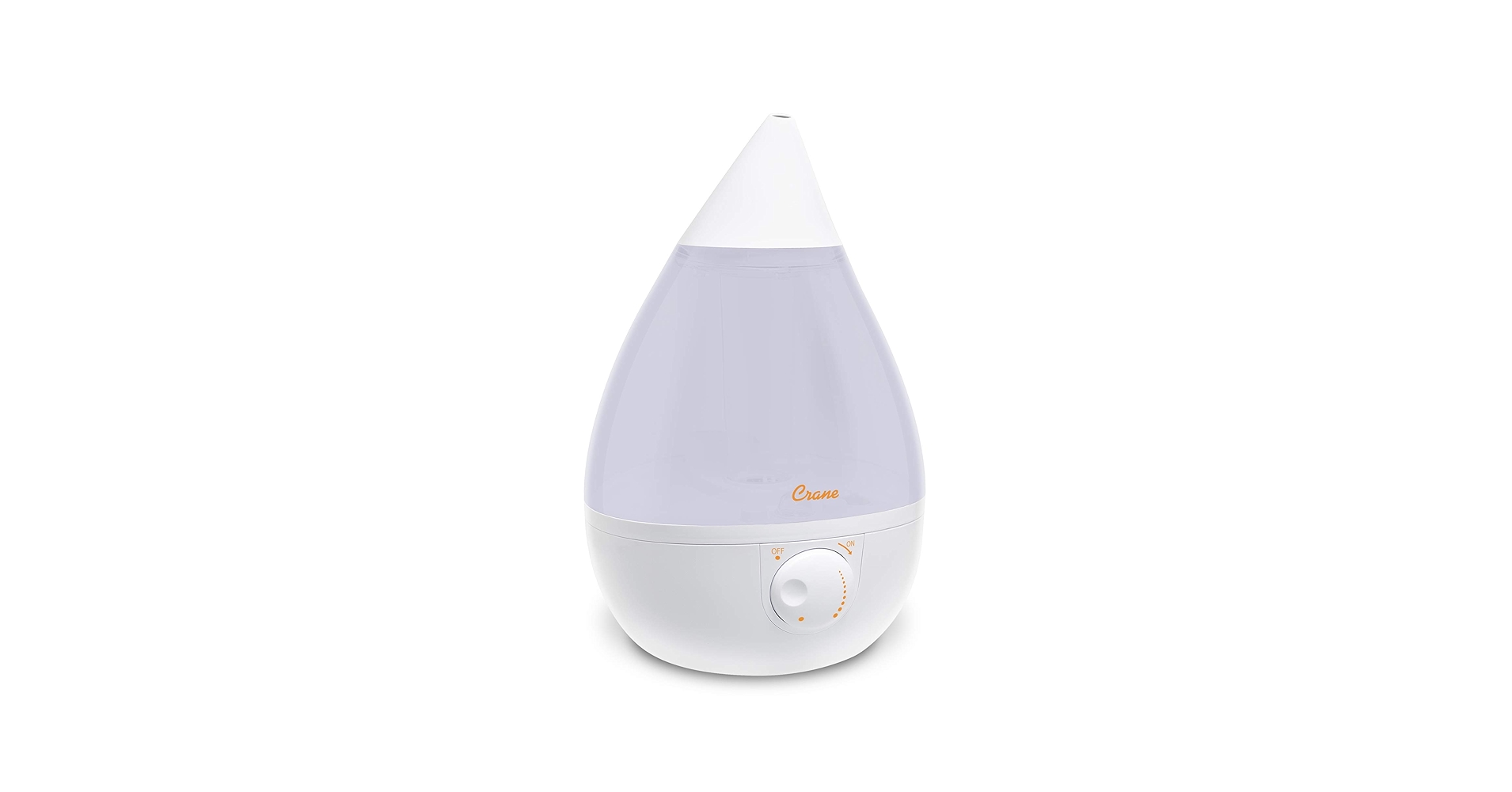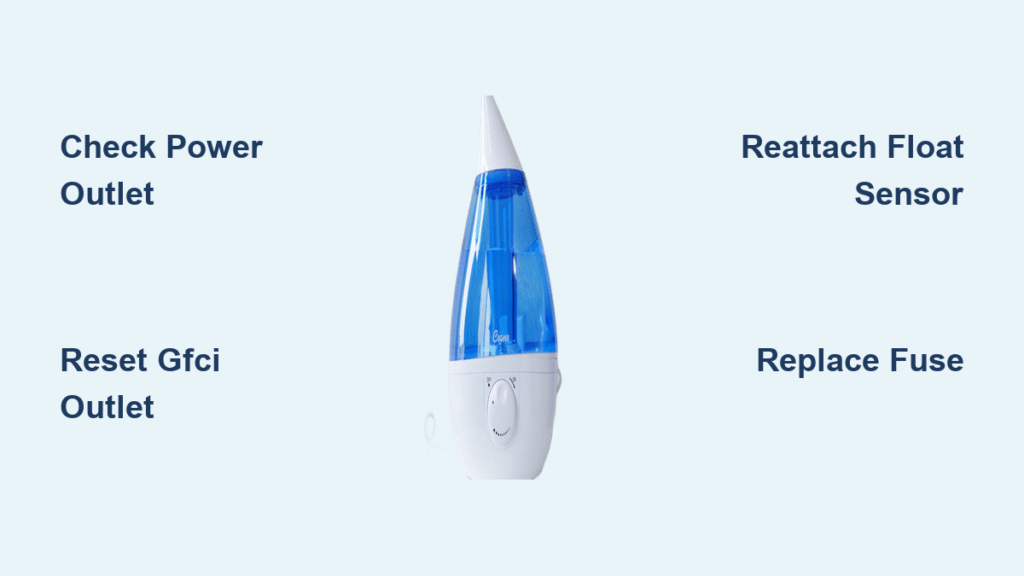That sinking feeling when your Crane humidifier not turning on hits hardest at 2 AM—dry throat, stuffy nose, and complete silence where gentle mist should flow. Whether it’s your first startup or a unit that’s worked flawlessly for years, Crane humidifiers refuse to power up for predictable reasons 90% of the time. Don’t grab your wallet for a replacement yet. Most failures stem from simple oversights or fixable components you can address tonight with household items. This guide delivers battle-tested fixes verified against Crane’s technical specifications, moving from 30-second checks to advanced diagnostics—all without voiding your warranty.
Confirm Your Power Source Works
Before dismantling your humidifier, eliminate the most common culprit: a dead outlet. Plug in a phone charger or lamp to verify power delivery. If they fail, the issue isn’t your Crane—it’s your home’s electrical system. This step takes 15 seconds but prevents hours of unnecessary disassembly.
Reset Tripped GFCI Outlets Immediately
Bathrooms and kitchens often use GFCI outlets that shut off during minor surges. Locate the outlet’s red reset button and press firmly until it clicks. Test again. If using a power strip, check for its hidden reset switch—many trip silently during voltage fluctuations. Move your Crane directly to a kitchen outlet (typically higher amperage) if resets fail.
Check for Voltage Drops in Older Homes
Homes built before 2000 often experience voltage drops during peak usage. If lights dim when your AC kicks on, your humidifier may not get enough juice. Plug your Crane into a dedicated circuit outlet—like one used for a microwave—and retry startup. Never use extension cords; they exacerbate voltage issues.
Fill Water Tank Correctly and Activate Controls
Your Crane humidifier not turning on often traces back to improper water tank setup. The unit has a safety lock preventing operation when empty or misaligned. Fill the tank to the MAX line (not just halfway), then seat it firmly on the base until you hear a distinct click—this engages the water sensor.
Execute the Mist Control Dial Sequence
Turn the dial fully clockwise to MAX (cloud icon) and hold for 5 full seconds. Mist should appear within 30 seconds. Only then dial back to your desired setting. Skipping this “wake-up burst” fools the system into thinking it’s malfunctioning—especially after storage.
Reattach the Dislodged Float Sensor
During shipping or cleaning, the white plastic washer (water level sensor) often slips off its peg. Lift the tank and locate the tall left-side peg in the base. Slide the washer up/down to ensure smooth movement—it must freely rise with water levels. Snap the small plastic cap (with paperclip loop) firmly on top to secure it.
Inspect and Replace the Internal Fuse

When external checks fail, the internal fuse is next. This tiny component (marked “AC 250V 1.5A” in green on the circuit board) blows during power surges. It’s located where the cord enters the top-left of the base, sometimes covered in insulation tubing.
Safely Test the Fuse Yourself
Warning: Unplug and empty all water first. Remove 4-6 Phillips screws from the base. Locate the glass/ceramic tube near the cord entry. Set a multimeter to continuity mode. Touch probes to both ends—a blown fuse shows infinite resistance (no beep). Never skip this test—replacing a good fuse risks further damage.
Install the Exact Replacement Fuse
Match the rating precisely (e.g., 1.5A, 250V AC). Generic hardware store fuses work if specs align. Slide the new fuse into its holder until snug. If the fuse blows repeatedly after replacement, stop—this indicates a shorted trace or damaged capacitor requiring professional repair.
Fix Common Placement and Setup Errors
Most “broken” Crane humidifiers simply suffer from user errors. These mistakes trigger automatic shutoffs that mimic power failure:
- Surface hazards: Operating on carpet/towels blocks airflow sensors
- Water sensor tricks: Uneven surfaces cause false “empty tank” readings
- Mineral interference: Hard water creates white dust that clogs sensors
Immediate fix: Place your Crane on a flat, waterproof tray (like a baking sheet) at least 3 feet off the ground. Bathroom counters work perfectly—never on wood furniture. If white dust appears, switch to distilled water or install Crane’s demineralization filter.
Deep Clean Mineral-Clogged Components
Mineral buildup from hard water can paralyze the ultrasonic disk—the core component that vibrates to create mist. If your Crane humidifier not turning on persists after basic checks, a deep clean often resolves it.
Perform the Ice-Vinegar Scrub
- Unplug and disassemble the tank/base
- Fill with 1:1 white vinegar solution (1 cup vinegar + 1 cup water)
- Add ¼ cup crushed ice and shake vigorously for 60 seconds—the ice scrubs hidden crevices
- Soak 30 minutes for severe buildup
- Rinse until vinegar smell vanishes
Revive the Ultrasonic Disk
The metal disk at the base’s center is critical. Dip a cotton swab in vinegar and scrub its surface in circular motions. You’ll feel resistance decrease as deposits dissolve. Never use metal tools—they scratch the disk permanently.
Adjust for Environmental Triggers

Your room’s conditions can trick your Crane into shutting down. High humidity triggers automatic shutoffs, while cold rooms (<65°F) slow mist production so much it seems dead.
Manage Humidity Feedback Loops
If windows fog within 30 minutes, your room’s oversaturated. Reduce the mist dial by one setting and keep bedroom doors slightly open. This balances humidity without triggering safety shutoffs—extending runtime by 4+ hours nightly.
Combat Cold Room Delays
In winter, warm the room to 68°F+ before starting your Crane. Cold water takes 2-3x longer to mist, making the unit appear non-functional. Pre-warm water to room temperature for instant startup.
Decide: Repair or Replace Your Unit

Some failures signal end-of-life, while others are economical to fix. Use these criteria:
Replace immediately:
– Cracked water tank (leaks near electronics = fire hazard)
– Burned plastic smell from the base (indicates melted wiring)
– Repeated fuse blows after replacement (hidden electrical fault)
Repair confidently:
– Blown fuse ($2 part, 10-minute fix)
– Reattached float sensor (5-minute solution)
– Mineral cleaning restores function (90% success rate)
Prevent Future Power Failures
A 7-minute weekly routine prevents 80% of Crane humidifier not turning on issues:
- Daily: Empty and refill the tank with fresh water
- Weekly: Vinegar soak (1 tbsp vinegar per cup water) for 30 minutes
- Monthly: Inspect the float sensor’s movement
- Storage: Always dry completely before packing away
Store Crane Humidifiers Correctly
Before summer storage:
1. Run a vinegar solution through the system
2. Remove the tank cap and demineralization filter
3. Air-dry all components for 48 hours
4. Store disassembled in a breathable cloth bag (never plastic)
5. Keep in climate-controlled spaces—garages crack plastic
Pro tip: Snap a photo of your fuse’s rating now. Markings fade after disassembly, and using the wrong fuse risks permanent damage.
Your Crane should now power up within 60 seconds of startup. If silence persists after these steps, contact Crane support with your model number—your unit may qualify for warranty repair. For immediate relief, place a bowl of water near your bed; evaporation provides temporary humidity while you await service. Remember: consistent maintenance turns your Crane into a decade-long ally against dry air, not a frustrating mystery.





